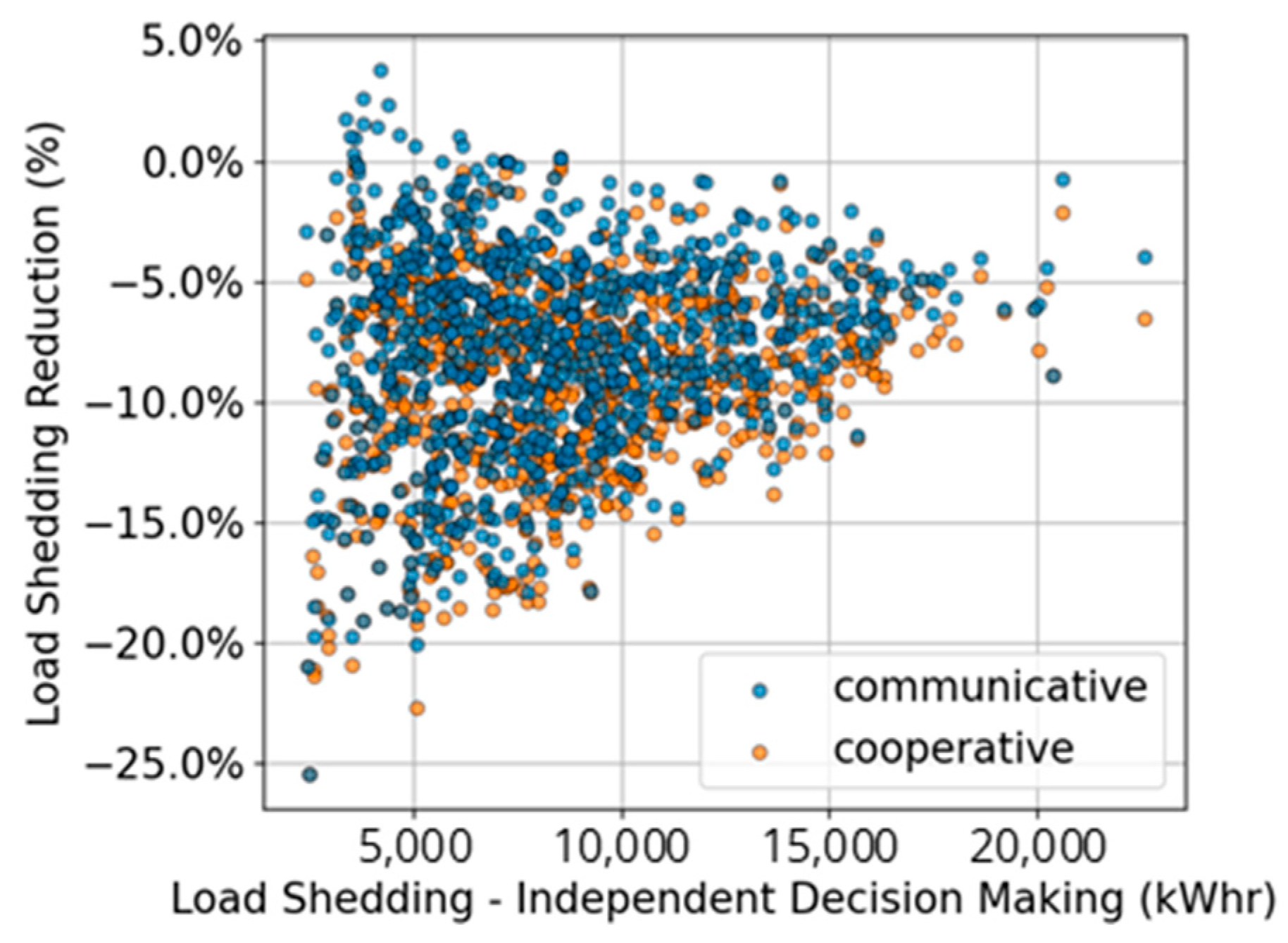Cooperative Operational Optimization of Water and Power Systems under Extreme Conditions †
Abstract
:1. Introduction
2. Methodology
Case Study
3. Results
4. Summary
Author Contributions
Funding
Institutional Review Board Statement
Informed Consent Statement
Data Availability Statement
Acknowledgments
Conflicts of Interest
References
- Oikonomou, K.; Parvania, M.; Khatami, R. Optimal Demand Response Scheduling for Water Distribution Systems. IEEE Trans. Industr. Inform. 2018, 14, 5112–5122. [Google Scholar] [CrossRef]
- Liu, Y.; Barrows, C.; Macknick, J.; Mauter, M. Optimization Framework to Assess the Demand Response Capacity of a Water Distribution System. J. Water Resour. Plan. Manag. 2020, 146, 04020063. [Google Scholar] [CrossRef]
- Sharma, S.; Li, Q. Decentralized Optimization of Energy-Water Nexus Based on a Mixed-Integer Boundary Compatible Algorithm. Appl. Energy 2024, 359, 122588. [Google Scholar] [CrossRef]



| Cooperative | Communicative | Independent | |
|---|---|---|---|
| Mean | 7712.1 | 7817.7 (1.37%) | 8447.1 (9.53%) |
| STD | 3394.0 | 3438.0 (1.3%) | 3629.8 (6.95%) |
Disclaimer/Publisher’s Note: The statements, opinions and data contained in all publications are solely those of the individual author(s) and contributor(s) and not of MDPI and/or the editor(s). MDPI and/or the editor(s) disclaim responsibility for any injury to people or property resulting from any ideas, methods, instructions or products referred to in the content. |
© 2024 by the authors. Licensee MDPI, Basel, Switzerland. This article is an open access article distributed under the terms and conditions of the Creative Commons Attribution (CC BY) license (https://creativecommons.org/licenses/by/4.0/).
Share and Cite
Perelman, G.; Shmaya, T.; Vrachimis, S.; Panteli, M.; Eliades, D.G.; Ostfeld, A. Cooperative Operational Optimization of Water and Power Systems under Extreme Conditions. Eng. Proc. 2024, 69, 14. https://doi.org/10.3390/engproc2024069014
Perelman G, Shmaya T, Vrachimis S, Panteli M, Eliades DG, Ostfeld A. Cooperative Operational Optimization of Water and Power Systems under Extreme Conditions. Engineering Proceedings. 2024; 69(1):14. https://doi.org/10.3390/engproc2024069014
Chicago/Turabian StylePerelman, Gal, Tomer Shmaya, Stelios Vrachimis, Mathaios Panteli, Demetrios G. Eliades, and Avi Ostfeld. 2024. "Cooperative Operational Optimization of Water and Power Systems under Extreme Conditions" Engineering Proceedings 69, no. 1: 14. https://doi.org/10.3390/engproc2024069014







